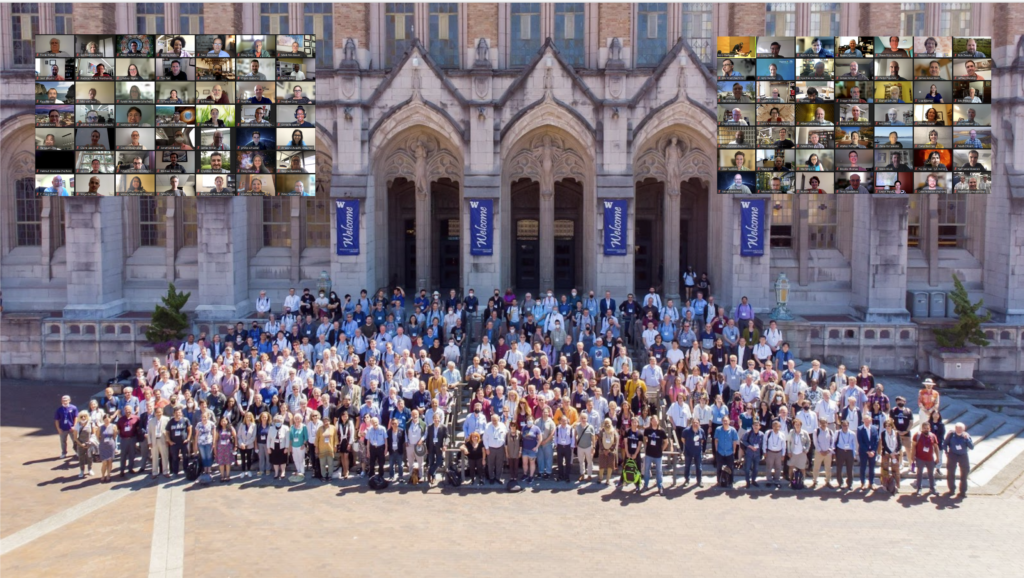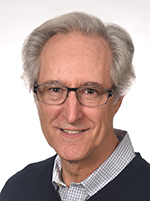
The U.S. particle physics community, along with colleagues from many other nations, met last month at the University of Washington in Seattle for its Snowmass Community Summer Study. At this very well-attended ten-day hybrid workshop, with seven hundred in-person attendees, the community discussed science questions and opportunities for its future. The full, broad scope of U.S. particle physics was explored, from experiments at colliders, to experiments in intense particle and neutrino beams, to experiments underground and observatories on mountain tops. Particle theory, accelerators, detectors, and computing were also discussed, as was community engagement. This workshop was the culmination of a study and discussion process that started in 2020 and that was prolonged for a year by the pandemic.
A community vision for the future of the Energy Frontier, which encompasses research at high-energy colliders, emerged from this process. This vision involves the study of a broad array of “big questions”, to be pursued experimentally via two main avenues: (1) to study known phenomena at high energies looking for indirect evidence of physics “beyond the Standard Model” (BSM), and (2) to search for direct evidence of BSM physics. This program calls for future accelerators which provide experimental opportunities with high energy and precision. The energy frontier vision voices strong support for future colliders on three timescales.
The vision emphasizes the soon-to-be-completed High Luminosity LHC (HL-LHC) at CERN as the immediate future of the field, with a 3 ab-1 physics program and including specialized experiments.
As the priority for the intermediate term, the vision calls for the fastest path towards an electron-positron “Higgs factory” as a global partnership. This vision is consistent with the statement that “An electron-positron Higgs factory is the highest-priority next collider.” made in the 2020 Update of the European Strategy for Particle Physics, as well as with the call of the 2014 P5 report to “Use the Higgs boson as a new tool for discovery” and with that report’s strong emphasis that the scientific justification for the ILC is compelling.
The new community vision does not express a preference for the type of electron-positron collider. The Higgs factory could be based on a linear collider, such as the International Linear Collider (ILC) or the CERN Linear Collider (CLIC), or on a circular collider, such as the Future Circular Collider (FCC-ee) being studied at CERN, or by both of these complementary collider types. The range of possible Higgs factories, as well as other possible future colliders, was systematically studied by the Implementation Task Force of the Snowmass Accelerator Frontier working group. Discussion in that context recognized that the ILC is still the most technically-ready future Higgs factory candidate, and the only candidate whose construction could start in the near future.
The vision for the longer-term future, beyond Higgs factories, foresees a multi-TeV collider enabling direct discovery at the 10-TeV-scale, such as a 100-TeV proton-proton collider or a 10-TeV muon collider, and it advocates the start of a vigorous R&D program.
The Snowmass community study will culminate in the next months in a set of written summary reports, to be added to the over five hundred white papers submitted to the study. The Snowmass reports and white papers will serve as input to the next phase of the U.S. strategic planning process. In that phase, the U.S. High Energy Physics Advisory Panel (HEPAP) will be charged by the DOE Office of Science and the NSF Directorate for the Mathematical and Physical Sciences to establish a P5 panel to prioritize particle physics projects under defined budget scenarios for the next decade or so. P5 will be composed of a selected group of community members chosen to represent the field as a whole, not their own or institutional interests, in giving strategic advice to DOE and NSF. P5 will be chaired by Professor Hitoshi Murayama of University of California, Berkeley. It is expected to present its final report to HEPAP for endorsement in the first half of 2023.


Recent Comments